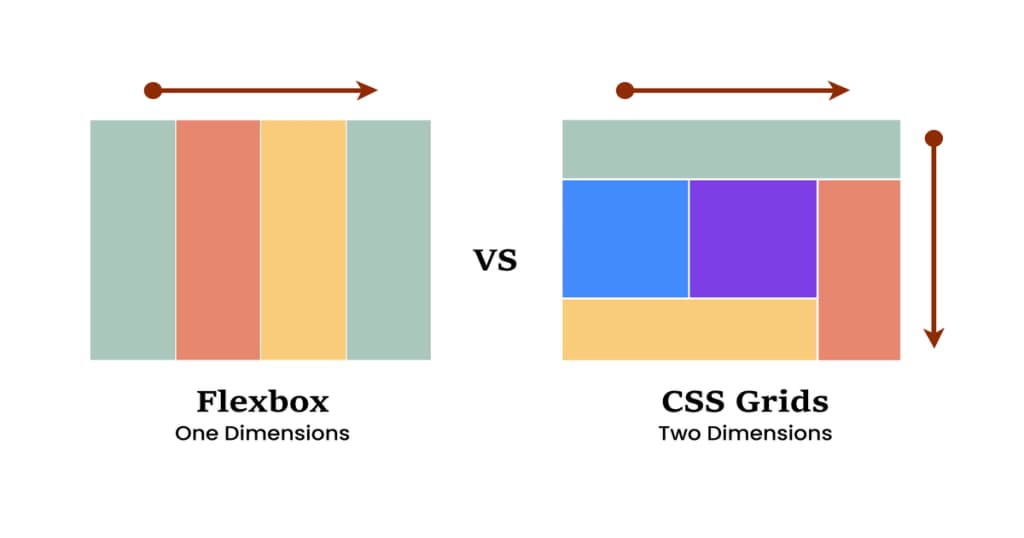The Ultimate Guide to Google Search Console in 2024: Master SEO & Digital Marketing

 Written by Massa Medi| January 7, 2025
Written by Massa Medi| January 7, 2025
In today's fast-paced digital marketing landscape, Google Search Console (GSC) remains an essential tool for website owners, marketers, and SEO professionals. As we head into 2024, mastering Google Search Console can give your site the competitive edge it needs to rank higher in search results and improve overall SEO performance.
This guide will walk you through everything you need to know, from setting up Google Search Console to using its powerful features to boost your website’s visibility. Whether you're a beginner or a seasoned marketer, this guide is packed with useful insights to optimize your content strategy.
What is Google Search Console?
Google Search Console is a free service provided by Google that allows website owners to monitor their site’s presence in Google Search results. It offers tools to help you understand how your site is performing, identify technical issues, and get valuable insights to improve your SEO strategy.
Key Features of Google Search Console:
- Performance Report: Track how well your site ranks for specific queries, see click-through rates (CTR), impressions, and average position in search results.
- URL Inspection Tool: Check if Google can index your pages and identify any errors.
- Mobile Usability Report: Ensure your site is mobile-friendly, a critical factor for ranking in 2024.
- Sitemaps: Submit your website’s XML sitemap to ensure Google crawls your site efficiently.
- Coverage Report: Understand which of your pages are being indexed by Google and troubleshoot those that aren’t.
Why Use Google Search Console in 2024?
In 2024, SEO continues to evolve, and Google Search Console is a powerful ally in navigating these changes. GSC helps you:
- Improve website visibility: By analyzing search data and identifying high-performing keywords.
- Fix technical issues: Quickly resolve indexing and mobile usability issues that could affect rankings.
- Optimize for core web vitals: Measure and improve page load times, which are crucial for user experience and ranking.
- Track backlinks: Identify the websites linking to your content, helping you assess your link-building efforts.
Step-by-Step Guide to Setting Up Google Search Console
- Sign in to Google Search Console: Go to Google Search Console and sign in with your Google account.
- Add Your Property: Click on "Add Property" and enter your website’s URL. You can choose between a Domain Property or URL Prefix. It's recommended to use the Domain Property for a more comprehensive view.
- Verify Ownership: Google needs to verify that you own the site. You can do this by:
- Adding a DNS record: The preferred method is to add a DNS TXT record to your domain provider.
- Uploading an HTML file: Google provides a file that you upload to your website's root directory.
- Submit Your Sitemap: Once verified, submit your XML sitemap under the Sitemaps tab. This helps Google find all the pages on your site.
Exploring Google Search Console Features
1. Performance Report
The performance report is your go-to feature for tracking how your website performs in Google Search. It provides metrics like:
- Total clicks: How many users clicked through to your site.
- Impressions: The number of times your site appeared in search results.
- Average CTR: The percentage of users who clicked your link after seeing it in search results.
- Average position: Your site’s average ranking for the selected queries.
Use these metrics to:
- Identify high-performing keywords and queries.
- Find pages with low CTR and optimize them for better titles and meta descriptions.
- Track your ranking progress over time.
2. URL Inspection Tool
If you’ve made changes to your content or added new pages, the URL Inspection Tool helps ensure they are indexed by Google. By submitting the URL for inspection, you can:
- Check if the page is currently indexed.
- View any crawling or indexing issues.
- Submit the page for re-indexing after updates.
This tool is invaluable when publishing new blog posts or making updates to old content.
3. Core Web Vitals & Page Experience
In 2024, Google places even more emphasis on user experience, with Core Web Vitals being a critical ranking factor. The three key metrics are:
- LCP (Largest Contentful Paint): Measures how quickly the main content loads.
- FID (First Input Delay): Gauges how responsive your page is.
- CLS (Cumulative Layout Shift): Evaluates how stable your page layout is.
The Page Experience report in GSC highlights how well your site performs in these areas and offers suggestions to improve your scores.
4. Mobile Usability Report
Mobile usability remains a top-ranking factor as mobile traffic continues to dominate. The Mobile Usability Report shows issues that prevent your site from being mobile-friendly, such as:
- Content wider than the screen.
- Clickable elements too close together.
- Text too small to read.
Fixing these issues ensures that your site meets Google’s mobile-first indexing standards.
5. Coverage Report
The Coverage Report gives insights into how Google crawls and indexes your site. It shows pages that are:
- Valid: Indexed without issues.
- Error: Pages that couldn’t be indexed due to problems like server errors or redirect loops.
- Excluded: Pages deliberately left out (e.g., via robots.txt or canonical tags).
By identifying and fixing errors here, you can ensure all important pages are indexed properly.
6. Enhancements
Under the Enhancements tab, you'll find reports on structured data elements like breadcrumbs, product schema, or FAQ schema. These reports show how well Google can read your structured data and if there are any errors to fix.
Using structured data can help your site appear in rich results, enhancing visibility in search.
How to Use Google Search Console for SEO in 2024
GSC is not just a monitoring tool but a powerful resource for SEO improvement. Here's how to use it to optimize your site’s performance in 2024:
- Find SEO Opportunities: Use the Performance Report to identify keywords with high impressions but low CTR. You can then improve meta descriptions and title tags to boost clicks.
- Submit New Content for Indexing: After publishing new content or making significant changes to existing pages, use the URL Inspection Tool to ensure Google re-indexes them.
- Fix Technical SEO Issues: Regularly check the Coverage Report and Mobile Usability Report for any errors that could impact your rankings.
- Monitor Core Web Vitals: Improving your site’s Core Web Vitals scores will be crucial for maintaining strong rankings in 2024. Ensure your site loads quickly, responds promptly, and remains visually stable.
- Use Insights for Content Strategy: Analyze the data from GSC to guide your content creation efforts. Focus on topics that drive traffic and engagement.
Conclusion
Google Search Console is an essential tool for anyone looking to improve their website's SEO in 2024. By understanding its features and how to leverage them, you can significantly enhance your site's visibility and performance in search results.
As SEO evolves, staying updated with tools like Google Search Console will give you a competitive advantage and ensure your content strategy aligns with the latest trends. Start exploring Google Search Console today and unlock the full potential of your website.
Recommended
Explore More Recent Blog Posts

Understanding How the Internet Works
January 13, 2025
Learn how the internet functions, from the basics of networking to protocols like HTTP. Understand key concepts like IP addresses, DNS, and data packet routing.

Progressive Web Apps: A Step-by-Step Guide
January 14, 2025
Learn the essentials of building Progressive Web Apps (PWAs) that combine the best of web and mobile apps. This guide covers service workers, manifest files, and offline capabilities to create a seamless user experience.

Mastering SEO and Content Marketing Strategies
January 10, 2025
Unlock the secrets of search engine optimization (SEO) and content marketing. Understand how Google indexes pages and learn to create valuable content that attracts and engages your target audience.

Web Analytics: Tracking User Behavior for Better UX
January 8, 2025
Harness the power of web analytics to improve your website's user experience. Learn how to set up Google Analytics, interpret user behavior data, and use tools like Hotjar and Crazy Egg to optimize your site's performance and conversion rates.

Cybersecurity Essentials for Web Developers
January 4, 2025
Protect your website and users with essential cybersecurity practices. Explore the importance of HTTPS, SSL certificates, and learn about common vulnerabilities like XSS and CSRF.

Monetization Strategies for Tech Professionals
January 1, 2025
Explore various ways to monetize your tech skills. From freelancing on platforms like Upwork and Fiverr to creating and selling digital products.

AI Tools for Developers: Boosting Productivity and Creativity
January 12, 2025
Leverage the power of AI to enhance your development workflow. Discover how tools like ChatGPT and GitHub Copilot can assist in coding, content creation, and problem-solving.

The Rise of No-Code and Low-Code Platforms
January 14, 2025
Explore the growing trend of no-code and low-code platforms. Understand how these tools are changing the landscape of web development and enabling non-technical users to create sophisticated applications.

Blockchain and Web3: The Future of the Internet
January 3, 2025
Dive into the world of blockchain technology and Web3. Understand the fundamentals of decentralized applications (dApps), smart contracts, and cryptocurrencies.

Why Learn React in 2025?
January 13, 2025
Explore the reasons behind React's enduring popularity in 2024. Learn about its efficiency, component-based architecture, and the vibrant ecosystem of libraries that support modern web development.

Understanding JavaScript Closures
January 6, 2025
Dive deep into the concept of closures in JavaScript. Learn how closures work, why they are useful, and how they can help you manage scope and data encapsulation in your applications.

CSS Grid vs. Flexbox: Which to Choose?
January 2, 2025
Understand the differences between CSS Grid and Flexbox, two powerful layout systems in modern web design. This post will help you decide which tool to use based on your project's needs.

React Hooks: A Comprehensive Guide
January 7, 2025
Get a thorough understanding of React Hooks and how they revolutionize state management in functional components. Explore hooks like useState, useEffect, and custom hooks.

Domain Names: What They Are and How to Choose One
January 12, 2025
Learn about domain names, their structure, and the importance of choosing the right one for your online presence. This post covers best practices for selecting domain names that enhance branding and SEO.

Web Hosting: A Simple Guide to Choosing the Right Provider
January 2, 2025
This guide provides an overview of different types of web hosting services, including shared, VPS, dedicated, cloud, managed, and colocation hosting. It offers practical examples of providers, tips for avoiding scams, and guidance on choosing the right service for your needs. Additionally, it highlights free hosting options like GitHub Pages, Netlify, and Vercel, along with steps for hosting a website that uses HTML, CSS, and JavaScript.

Online Courses and Starting a Tech YouTube Channel: Sharing Your Knowledge and Impacting Lives
January 1, 2025
Learn how to create and sell online courses to share your expertise, and explore the steps to start a tech YouTube channel that can reach and engage a global audience. This blog covers the benefits of online courses, planning content, and strategies to grow a successful YouTube channel.

Unleashing the Power of SSL Certificates: Why SSL Matters for Your Website
January 10, 2025
Learn about SSL certificates and their importance in protecting websites. Understand data encryption, authentication, and the types of SSL certificates available, including Domain Validation, Organization Validation, and Extended Validation SSL. Discover how SSL boosts user trust and search engine rankings while ensuring legal compliance.

The Importance of Version Control in Software Development
January 9, 2025
Explore the critical role of version control systems like Git in software development. Understand how version control helps manage changes, collaborate with teams, and maintain project history.

Building Networks as Developers: A Comprehensive Guide to Professional Connections
January 4, 2025
Learn how to build a strong network as a developer and maximize your online presence.

The Internet of Things (IoT): Revolutionizing Our Connected World
January 5, 2025
The Internet of Things (IoT) is transforming the way we live and work by connecting everyday devices to the internet, allowing them to exchange data. This article explores IoT, its history, architecture, real-world applications, and its future impact on industries like healthcare, agriculture, and smart cities. It also discusses the role of AI in IoT, security challenges, and ethical implications.